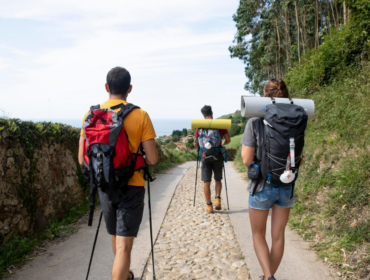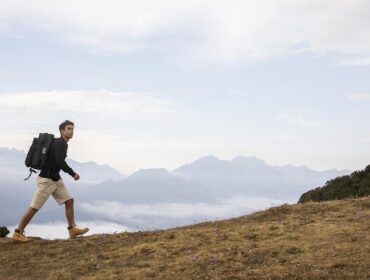Camping isn’t just a pastime; it’s a lifestyle. Nothing beats sitting under a sky full of stars, the crisp air carrying the scent of pine, and the sizzle of something delicious on your camp stove. But let’s get one thing straight: if you don’t have the right pressure regulator for your camping stove, you might be dining on cold granola instead of hot chili. Nobody wants that. So, let’s break down the nuts and bolts (and gas fittings) of pressure regulators and how they’ll keep you cooking in the wild, rain or shine.
The Role of a Pressure Regulator
First off, what even is a pressure regulator? In the simplest terms, it’s like a traffic cop for gas. It controls the flow of propane from your fuel canister to your stove. Without it, the gas would be like a race car with no brakes—too fast, too dangerous. A good pressure regulator ensures your stove gets a steady, safe flow of gas, so your flame stays consistent. No flare-ups, no drama, just perfectly cooked meals.
The Science (But Not Too Much Science)
Gas stoves, whether in your kitchen or at your campsite, need the right amount of pressure to operate safely. A camping stove typically uses propane, which is stored at high pressure in those small, portable canisters. The regulator’s job is to reduce that pressure to a level your stove can handle. Think of it like a coffee filter: it controls the flow so you get a smooth brew, not a mess.
What Kind of Pressure Regulator Do You Need for Your Camping Stove?
Here’s the big question. The answer depends on the type of stove you have and how you plan to use it. Some camping stoves come with built-in regulators—easy peasy. Others require you to attach an external regulator. Let’s dig into the specifics.
1. Back Pressure Regulators
- Use in Camping:
Back pressure regulators are less commonly used in typical camping applications like stoves or propane systems, as they are designed to maintain a set inlet pressure and relieve excess pressure. They are more suited for industrial or high-precision scenarios where managing excess pressure in a system is critical. - Camping Recommendation:
If you’re working with a system that requires consistent inlet pressure (like advanced outdoor gas systems or water pumps), this could work. However, most camping gear doesn’t require this level of complexity.
2. Dome-Loaded Pressure Regulators
- Use in Camping:
Dome-loaded regulators are highly accurate and used in scenarios where precise gas flow and pressure control are needed. These are typically used in industrial, scientific, or specialized setups. - Camping Recommendation:
Dome-loaded regulators might be overkill for general camping use like propane stoves, lanterns, or heaters. They require a pilot gas to operate, which adds complexity. Unless you have specialized equipment that demands exact pressure control, these are not ideal for camping.
3. Spring-Loaded Pressure Regulators
- Use in Camping:
Spring-loaded regulators are highly common in camping applications. They are simple, reliable, and widely used to regulate propane or liquid fuel pressure in stoves, heaters, and lanterns. - Camping Recommendation:
This is the most suitable regulator for camping needs. They work well with portable propane tanks and are often built into camping stoves and grills. The simplicity of their design makes them ideal for outdoor use.
For general camping applications, spring-loaded pressure regulators are the best choice due to their simplicity and reliability. While back pressure and dome-loaded regulators have their uses, they are typically better suited for specialized or industrial applications and may be unnecessarily complex for camping. Always ensure the regulator matches the pressure requirements of your equipment for safe and effective operation.
High-Pressure vs. Low-Pressure Regulators
This is where things can get a little tricky. High-pressure regulators deliver gas at a higher rate, which means bigger flames and faster cooking. They’re great for outdoor cooking setups where you’re running multiple burners or using a stove that requires more horsepower. Low-pressure regulators, on the other hand, provide a gentler flow of gas. They’re ideal for smaller stoves and precise cooking. Think of it like the difference between a roaring campfire and a cozy candle.
If you’re using a propane camping stove, chances are you’ll need a regulator designed specifically for propane gas. These regulators are built to handle the pressure from those little one-pound canisters or larger refillable tanks. They ensure the gas flows at the right rate for cooking, whether you’re simmering soup or frying up bacon.
Not all regulators work with all stoves. Before you buy, check the manufacturer’s specs for your stove. Using the wrong regulator can lead to poor performance or, worse, a safety hazard. Nobody wants a surprise fireball when they’re just trying to boil water.
How to Choose the Right Regulator for Your Trip
Choosing the right pressure regulator for your camping trip doesn’t have to be complicated, but it does require some consideration. First, think about the type of camping you’ll be doing. Are you backpacking with a lightweight stove, or setting up a full camp kitchen with a large two-burner stove? Next, consider your fuel source—are you using disposable canisters for convenience or a bulk propane tank for extended use? Finally, factor in the weather conditions. Some regulators perform better in cold or wet conditions, which is essential if you’re camping in the rain or in colder climates.
Here are three key tips for selecting and maintaining your pressure regulator:
- Match the Regulator to Your Setup: Ensure the regulator you choose is compatible with your stove and fuel source, whether it’s a portable propane tank or disposable canisters.
- Inspect Regularly for Issues: Check for cracks, leaks, or signs of wear before and during your trip. A flickering or sputtering stove flame often signals a problem that might be resolved by tightening connections or clearing debris.
- Know When to Replace It: If troubleshooting doesn’t solve the issue, replace the regulator. Safety should always come first, and a faulty regulator isn’t worth risking an accident.
Camping is all about preparation, and your cooking setup is no exception. Choosing the right pressure regulator may not be the most exciting part of your trip planning, but it’s crucial to ensure your stove runs safely and efficiently. With the right regulator, you can enjoy a smooth outdoor cooking experience and focus on what truly matters—exploring the outdoors and enjoying great meals.
FAQs About Camping Stove Regulators
Can I use the same regulator for different stoves?
In most cases, no. Regulators are designed to match specific stoves and fuel sources. Using the wrong one can lead to poor performance or safety issues. Always check compatibility before connecting a regulator to a new stove.
What’s the difference between high-pressure and low-pressure regulators?
High-pressure regulators are for stoves that need more gas flow, like those with large burners or multiple cooking surfaces. Low-pressure regulators are better for smaller stoves and more precise cooking. Think of it like driving a sports car versus a family sedan—both have their uses, but you wouldn’t take the sports car to a grocery store.
How do I maintain and troubleshoot my camping stove regulator?
Regular maintenance is key. Inspect the regulator and connections before every trip. Look for cracks, rust, or other signs of damage. If your stove isn’t working right, check for leaks by applying soapy water to the fittings and watching for bubbles. Clean any debris from the connections, and make sure everything is screwed on tightly. If all else fails, replace the regulator. Better safe than sorry.





